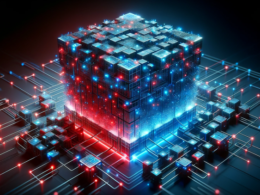According to Gartner, misconfigurations in network and firewall setups pose a significant risk to organizations. In fact, they predict that 99% of all firewall breaches this year will be caused by misconfigurations. This highlights the need for AI to assist CISOs and CIOs in tackling this complex issue. Failing to configure a hybrid cloud setup or having a misconfigured firewall can lead to undetected breaches that have severe consequences.
Cisco, a leading technology company, has recognized the importance of addressing these risks and has taken a proactive approach by introducing the Cisco AI Assistant for Security and the AI-powered Encrypted Visibility Engine. The AI Assistant has been trained on a vast security-focused data set, analyzing over 550 billion security events daily. It is a testament to Cisco’s commitment to integrating AI as an essential component in their security cloud.
“One of the things that we wanted to do was make sure that AI was pervasive as part of the core fabric of Cisco security cloud, and every aspect of what we do in Cisco security, that’s what we’ve been working on,” says Jeetu Patel, executive vice president and general manager of security and collaboration at Cisco.
In addition to the AI Assistant, Cisco has also developed the Encrypted Visibility Engine to inspect encrypted traffic efficiently. Unlike traditional methods of decrypting traffic for inspection, this engine eliminates operational, privacy, and compliance concerns. By leveraging their extensive network expertise, Cisco has created a comprehensive solution to enhance security measures.
The Importance of Firewall Configuration
Configuring firewalls and maintaining current patches and policies can be a time-consuming task that often gets overlooked. Yet, it is crucial for effective cybersecurity. The complexity of a firewall directly impacts its vulnerability to breaches. According to Cybersecurity Insiders, 58% of organizations have over 1,000 firewall rules, with some having millions. This highlights the urgent need for innovation in this technology category.
“Cisco is harnessing AI to reframe how organizations think about cybersecurity outcomes and tip the scales in favor of defenders,” explains Patel.
Gartner predicts that by 2026, more than 60% of organizations will have multiple types of firewall deployments, leading to the adoption of hybrid mesh firewalls. Furthermore, they expect over 30% of new distributed branch-office firewall deployments to be firewall-as-a-service offerings. This indicates a growing demand for flexible and scalable firewall solutions.
Developing AI Assistants for Firewall Management
Cisco’s AI Assistant for Security is specifically designed to streamline the management of firewalls. Through automation and AI-based approaches, it offers assistance in policy identification, troubleshooting, and policy lifecycle management. By integrating this assistant into their cloud-delivered Firewall Management Center, Cisco can leverage advanced natural language processing and machine learning capabilities.
“We created a generative tool designed to simplify firewall management for both seasoned admins and novice users,” writes Raj Chopra, SVP and Chief Product Officer of the security business group at Cisco.
Cisco’s vision extends beyond just firewall management. They plan to integrate AI assistants across various roles in their Security Cloud to automate security analysis and reporting tasks. This approach aims to provide contextually useful information and enable continuous learning with human input.
Other cybersecurity providers, such as Lacework, also recognize the value of AI assistants. Merritt Baer, Field CISO at Lacework, explains that AI-driven engines help users better understand permissions and interact with security insights. However, she emphasizes the importance of understanding the information provided and ensuring internal security policies align with these AI tools.
VentureBeat notes that human-in-the-middle workflows are now an essential factor in AI assistant design. This flexibility allows assistants to adapt to different roles without requiring re-configuration. Cisco’s AI Assistant follows this paradigm, supporting multiple standard configuration roles.
Ultimately, the success of cybersecurity providers in integrating AI assistants and considering the human-in-the-middle dynamics will shape the effectiveness of these tools in securing organizations in the long term.










